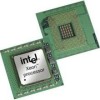Intel BX80605X3430 Data Sheet - Page 31
Technologies
 |
UPC - 735858210331
View all Intel BX80605X3430 manuals
Add to My Manuals
Save this manual to your list of manuals |
Page 31 highlights
Technologies 3 Technologies 3.1 3.1.1 3.1.2 Intel® Virtualization Technology Intel Virtualization Technology (Intel VT) makes a single system appear as multiple independent systems to software. This allows multiple, independent operating systems to run simultaneously on a single system. Intel VT comprises technology components to support virtualization of platforms based on Intel architecture microprocessors and chipsets. Intel Virtualization Technology (Intel VT-x) added hardware support in the processor to improve the virtualization performance and robustness. Intel Virtualization Technology for Directed I/O (Intel VT-d) adds chipset hardware implementation to support and improve I/O virtualization performance and robustness. Intel VT-x specifications and functional descriptions are included in the Intel® 64 and IA-32 Architectures Software Developer's Manual, Volume 3B and is available at: http://www.intel.com/products/processor/manuals/index.htm. The Intel VT-d spec and other VT documents can be referenced at: http://www.intel.com/technology/virtualization/index.htm. Intel® VT-x Objectives Intel VT-x provides hardware acceleration for virtualization of IA platforms. Virtual Machine Monitor (VMM) can use Intel VT-x features to provide improved reliable virtualized platforms. By using Intel VT-x, a VMM is: • Robust-VMMs no longer need to use paravirtualization or binary translation. This means that they will be able to run off-the-shelf OSs and applications without any special steps. • Enhanced-Intel VT enables VMMs to run 64-bit guest operating systems on IA x86 processors. • More reliable-Due to the hardware support, VMMs can now be smaller, less complex, and more efficient. This improves reliability and availability and reduces the potential for software conflicts. • More secure-The use of hardware transitions in the VMM strengthens the isolation of VMs and further prevents corruption of one VM from affecting others on the same system. Intel® VT-x Features The processor core supports the following Intel VT-x features: • Extended Page Tables (EPT) - EPT is hardware assisted page table virtualization - It eliminates VM exits from guest OS to the VMM for shadow page-table maintenance • Virtual Processor IDs (VPID) - Ability to assign a VM ID to tag processor core hardware structures (such as TLBs) - This avoids flushes on VM transitions to give a lower-cost VM transition time and an overall reduction in virtualization overhead. Datasheet, Volume 1 31















